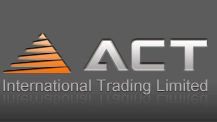Micron: Cease mobile NAND development globally
Micron stated that, given the continued poor financial performance of mobile NAND products in the market, as well as the slower growth compared to other NAND opportunities, Micron will cease the development of future mobile NAND products globally, including terminating the development of UFS5 (the fifth-generation universal flash storage).
Micron stated that this decision only affects the global development of mobile NAND products. Micron will continue to develop and support other NAND solutions, including SSDs, NAND solutions for the automotive and other end markets, and will also continue to support the mobile DRAM market and provide a DRAM product portfolio.
A few days ago, Micron Technology released its financial report for the Q3 of FY2025 (the period from March to May 2025), showing that the company's revenue for this quarter was 9.3 billion US dollars, an increase of 15% compared to the previous quarter and 37% year-on-year. The growth in performance was mainly attributed to the development of the DRAM business, especially the HBM business. Micron's DRAM revenue was 7.071 billion US dollars, accounting for 76% of the total revenue, with a 15.5% increase compared to the previous quarter. Among this, the HBM business saw a 40% increase compared to the previous quarter. Micron's NAND business revenue for this quarter was 2.155 billion US dollars, an increase of 16.2% compared to the previous quarter.
According to the data, mobile NAND refers to NAND flash memory chips and related products used in portable devices such as smartphones and tablets, mainly including eMMC, UFS, mobile SSD, and memory cards, etc.
The original manufacturer continuously adjusts its strategies, and some products are in short supply.
In recent years, the storage market has witnessed a polarized development trend. The growth of the consumer electronics market has been sluggish, which has restricted the development of some storage products. At the same time, AI applications have flourished everywhere, driving the demand for high-performance and large-capacity storage products to rise sharply, thereby driving the growth of the performance of related storage manufacturers.
To cope with market changes, the original factory has been adjusting its product strategies one after another this year.
In the DRAM sector, the original manufacturers are actively focusing on developing high-end DRAM products such as DDR5 and HBM, and have been gradually reducing the production capacity of DDR4. For instance, in June this year, Micron Technology announced that it would start to gradually cease production of DDR4. The shipment volume will gradually decline over the next 6 to 9 months, and ultimately, it will be completely discontinued.
The original manufacturer has controlled the production capacity of DDR4, resulting in a decrease in the corresponding supply of DDR4. Meanwhile, the demand for DDR4 remains relatively strong. As a result, some DDR4 products have experienced an astonishing increase in prices in the spot market, and the contract prices for DDR4 in the second half of the year are also expected to rise.
The latest survey by TrendForce (a market research firm) indicates that in the second half of 2025, the DDR4 market is expected to remain in a state of continuous shortage of supply and strong price increase. Due to the rigid orders from servers squeezing the supply in the PC and Consumer markets, PC OEMs have to accelerate the introduction of DDR5 solutions, while Consumer manufacturers are facing challenges of high prices and difficulty in obtaining materials. Moreover, the tight supply-demand situation in the DDR market has also pushed up the contract price of Mobile DRAM. The increase in LPDDR4X in the third quarter was the largest single-quarter increase in nearly a decade.
In the NAND field, the original factory's production capacity is also shifting towards high-margin products. Coupled with the influence of AI, enterprise-level SSD orders are in short supply.
According to a July survey by TrendForce, the shipment volume of NVIDIA Blackwell platform has been increasing quarter by quarter this year. Moreover, the demand for general-purpose servers in North America is expanding. The strong order momentum from China's leading customers is expected to continue into the second half of the year, which will stimulate the continuous growth of Enterprise SSD demand in the third quarter. TrendForce predicts that the contract price of Enterprise SSD in the third quarter will increase by 5% to 10%.


 ENGLISH
ENGLISH  USA
USA  DEUTSCH
DEUTSCH  FRENCH
FRENCH 